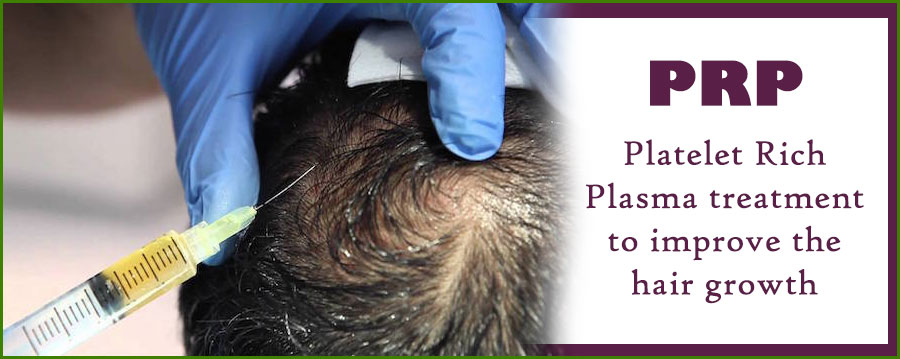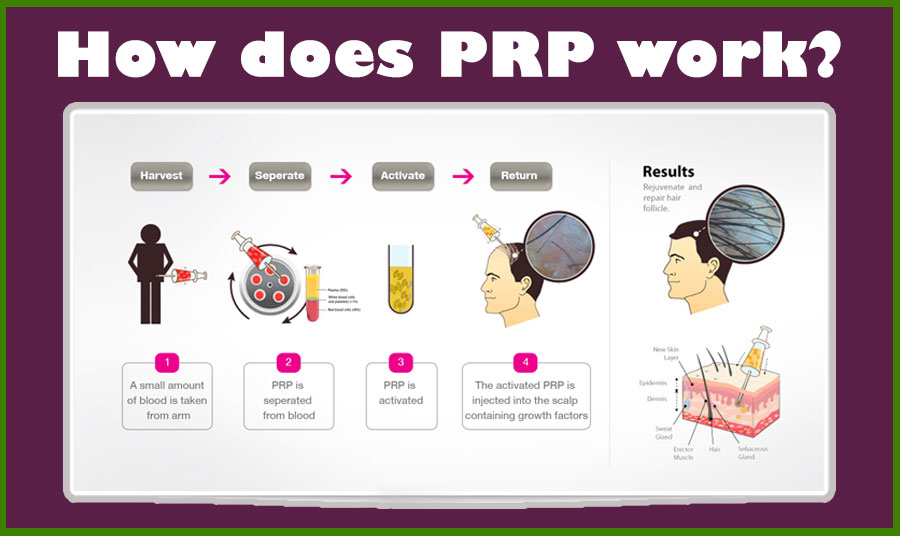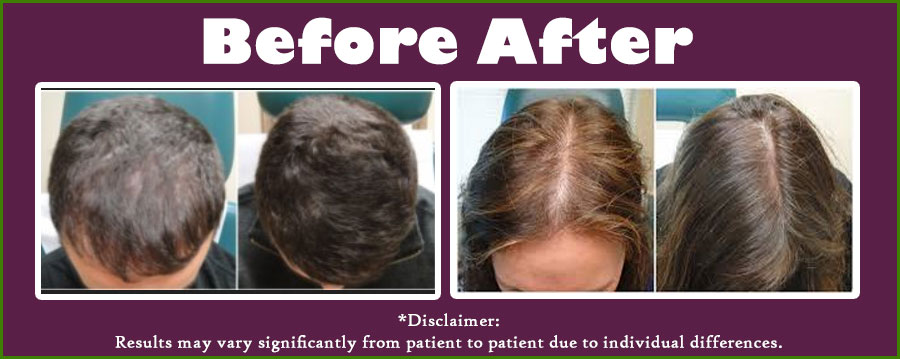PRP
Platelet Rich Plasma, popularly known as PRP is prepared from the blood of the patient with a predominantly high concentration of platelets in a limited volume of plasma. Platelet rich plasma contains bioactive proteins and growth factors which work actively to modulate cell growth as well as activity. In the course of PRP Treatment to improve the hair growth, it is either conducted by injecting it or applying it locally after a micro needling.

How does PRP work?
Platelets contain growth factors essential for tissue healing and repair. In the body, when tissue becomes injured, platelets are responsible for clotting blood to stop bleeding and stimulating cells to cause healing. This is their normal function. It has been found that these growth factors can cause multiplication of cells of different types including hair cells and skin cells. Hence, they are being used to treat hairloss, after hair transplantation, to treat scars such as pimple scars, skin rejuvenation of ageing skin.
» It Prevents Further Hair Loss
» It rejuvenates thinning of hair so that the follicle is stimulated make the hair grow thicker. It strengthens the hair root.
» It also prepares the skin and hair for an upcoming hair transplant, PRP has long been known for its benefit in preparing the region for a hair transplant

Benefits of PRP
» Proven results in different scientific studies all over the world
» Since it is autologous (your own), this method eliminates the risk of transmissible infections.
» It is free of any risks of allergic reactions, being autologous.
» This is an office-based treatment
» The price of this treatment is quite affordable as compared to other treatment options
Where can PRP be used?
There are various surgical and medical indications of PRP injection like in dental, orthopaedics, traumatology and in wound healing. However, in the field of Dermatology it has been used extensively for:
1) Skin rejuvenation called VAMPIRE LIFT (so called because blood product is being injected in to skin)
2) Acne scars
3) Male/female pattern hair loss
4) After hair transplantation to enhance grafted hair growth and donor healing
Generally, people who have lost all hair are advised not to opt for this procedure as it does not help grow new hair. It can only thicken the existing hair by strengthening hair follicle.
FAQs
What are the risks of PRP injection?
Since the PRP is prepared from your own blood, it is an extremely safe procedure and there is very little risk of infection or allergic reactions. Mild pain may occur, but this is minimal and can be overcome by applying an anaesthetic if needed. Usually no anaesthesia is needed.
How many sessions do I need?
Usually 4 to 6 sessions.
When to see the progress?
Generally, hair shaft become thicker and looks more lustrous with reduction in hair fall within 4-6 weeks while new growth is likely in about 4 months.
What activities can I do after a PRP injection?
You can do all your routine activities of daily living. People can go back to work right away. It’s a lunch time procedure.
Is this a procedure full proof?
This is a procedure which is new and hence evidence is being gathered. Some papers have been published, and the scientific logic is strong.

Procedure
It is a very simple, half-an-hour lunchtime procedure and you can join your work immediately after the treatment.
1) First blood is drawn from your vein like you give blood for any other blood test.
2) Then this blood is processed and centrifuged and PRP is separated from the rest of the blood.
3) Finally, under topical anaesthesia, PRP is injected into the scalp using fine needlesµ needling by derma pen.
Studies show that, unlike in the treatment of tendons and ligaments, stimulation of hair regrowth requires plasma with a much higher concentration of platelets for successful results. Here at Skin Heights, your blood platelets are concentrated to the highest concentration.
PRP therapy can be repeated every 1-2 months and usually 4-6 sittings are sufficient, though some patients may require maintenance therapy once a year or more frequently depending upon the severity of hair loss.

